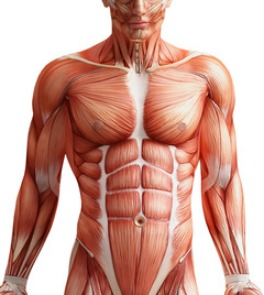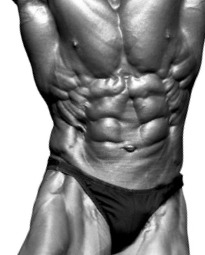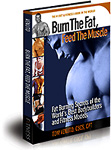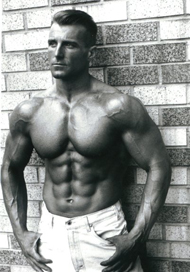Title: The Truth About Fast Weight Loss
By line: By Tom Venuto
URL: www.BurnTheFat.com!
Word count: 1356 words
WEIGHT LOSS POP QUIZ: What are 3 things that ALL 8 of these advertisements have in common?
“Burn 30 lbs in 3 weeks – no diet!”
“Lose 9 Pounds Every 11 Days!”
“Lose a pound a day without diet or exercise!”
“Lose 2 pounds a day without dieting!”
“Lose 30 pounds In 30 Days!”
“Lose 20 lbs in 3 weeks!”
“Burn 30 lbs in 25 days!”
“Lose 10 Pounds This Weekend!”
ANSWER: (1) They are all FALSE, (2) they are all DECEPTIVE…
I just did an Internet search for “how fast should you lose weight” and these are just a small sample of ACTUAL ADS that are running this very moment. They sure are enticing, aren’t they? They play on your emotions and on your desire for instant gratification.
But did you know that…
(3) these claims are all actually ILLEGAL, says the Federal Trade Commission (FTC)
“We have known for some time now that there is a serious problem with weight-loss product advertising,” said FTC Chairman Timothy J. Muris. “Reputable marketers continue to take care to avoid false and misleading claims, but it appears that too many unscrupulous marketers are making false claims promising dramatic and effortless weight loss to sell their products. It is not fair to consumers; it is not fair to legitimate businesses, it is illegal, and it will not be tolerated.”
You might be asking, “Ummm, if it will not be tolerated, then why do we keep seeing these ads?” Ah yes, well, God bless the Internet, On Google, you can put up an ad and have it showing in 15 minutes. You can then have it taken down just as fast. Same goes for websites. The FTC couldn’t keep up with OFFLINE false advertising, how are they possibly going to keep up with it ONLINE??? And it’s only going to get worse.
There’s only so much the FTC and other consumer watchdog organizations can do. It’s up to YOU to educate YOURSELF and know the red flags and warning signs of bogus weight loss claims.
Here’s what else the FTC says about why these types of advertising claims are so damaging:
- “The deceptive promotion of quick and easy weight loss solutions potentially fuels unrealistic expectations on the part of consumers. consumers who believe that it really is possible to lose a pound (of fat) a day may quickly lose interest in losing a pound a week.”
- “The proliferation of “fast and easy” fixes undermines the reality of what it takes to lose weight. People who need to lose weight are buying empty promises.”
I believe that the weight loss education industry has been knocked a few steps backward in the last few years due to (1) the internet and (2) the horrendous reality TV shows that actually encourage people to attempt “extreme” body makeovers or see who can lose weight the fastest. The winners (or shall we say, the “losers”, as if that’s a flattering title to earn), are rewarded generously with fortune, fame and congratulations.
These shows are damaging and despicable. I’m shocked that so many millions tune in and I’m even more surprised how many people think this garbage is “inspiring.”
Let’s face it. Everyone wants to get the fat off as quickly as possible – and having that desire is not wrong – it’s simply human nature. Patience is the one thing you never seem to have when you’ve got a body fat problem. You want the fat gone and you want it gone now!
Like the FTC said, with what we see on TV these days and with web page after web page of fast weight loss claims, you actually start to believe it’s doable and you’re no longer interested in a healthy 1-2 lbs weight loss per week. In fact, you even see people with your own eyes losing weight incredibly fast. How do you deny it’s possible when you see THAT?
Well, the answer comes to you when you expand your time perspective and see where those people are 6, 12, 18 months from now. Deep in your heart, you KNOW the answer…
The faster you lose weight, the more muscle you will lose right along with the fat, and that can really mess up your metabolism.
An even bigger problem with fast weight loss is that it just won’t last. The faster you lose, the more likely you are to gain it back. It’s the the “yo-yo diet effect” – weight goes down, but always comes back up.
What Really Matters Is Not How Much WEIGHT You Lose, But How Much FAT You Lose
Where did your weight loss come from? Did you lose body fat or lean body mass? “Weight” is not the same as “fat.” Weight includes muscle, bone, internal organs as well as lots and lots of water…
Don’t Be Fooled By Water Weight Losses
One thing you should also know is that it’s very common to lose 3 – 5 pounds in the first week on nearly any diet and exercise program and often even more on low carb diets (because low carb diets deplete glycogen and every gram of glycogen holds 3 grams of water). Just remember, its NOT all fat – WATER LOSS IS NOT FAT LOSS – AND WATER LOSS IS TEMPORARY!
The only way to know if you’ve actually lost FAT is with body composition testing. For home body fat self-testing, I recommend the Accu-Measure skinfold caliper as first choice. Even better, get a multi site skinfold caliper test from an experienced tester at a health club, or even an underwater (hydrostatic) or air (bod pod) displacement test.
From literally hundreds of client case studies, I can confirm that it’s rare to lose more than 2 to 3 lbs of weight per week without losing some muscle along with it. If you lose muscle, you are damaging your metabolism and this will lead to a plateau and ultimately to weight relapse.
The Biggest Weight Loss Mistake That Is FATAL To Your Long Term Success
Lack of patience is one of the biggest mistakes people make when it comes to losing body fat. If you want to lose FAT, not muscle, and if you want to keep the fat off for good, then you have to take off the pounds slowly (of course, if you want to crash diet the weight off fast, lose muscle with the fat and gain all the fat back later, be my guest!).
This is one of the toughest lessons that overweight men and women have to learn – and they can be very hard learners. They fight kicking and screaming, insisting that they CAN and they MUST lose it faster.
Then you have these TV shows that encourage the masses that rapid, crash weight loss is okay. To the producers of these shows, I say SHAME ON YOU! To the personal trainers, registered dieticians and medical doctors who are associated with these programs, I say DOUBLE SHAME ON YOU, because you of all people should know better. These shows are not “motivating” or “inspiring” – they are DAMAGING! They are a DISGRACE!
The rapid weight loss being promoted by the media for the sake of ratings and by the weight loss companies for the sake of profits makes it even harder for legitimate fitness and nutrition professionals because our clients say, “But look at so and so on TV – he lost 26 pounds in a week!”
Sure, but 26 pounds of WHAT – and do you have any idea what the long term consequences are?
Short term thinking… foolish.
Do it the right way. The healthy way. Take off pounds slowly, and steadily with a sensible lifestyle program like my BurnTheFat Feed the Muscle System that includes the important elements of cardio training, strength training and proper nutrition.
Measure your body fat, not just your body weight, and make this a new lifestyle, not a race, and you will never have to take the pounds off again, because they will be gone forever the first time.
Tom Venuto, author of Burn The Fat Feed The Muscle www.BurnTheFat.com!
About the Author:
Tom Venuto is the author of the #1 best seller, Burn the Fat, Feed the Muscle: Fat 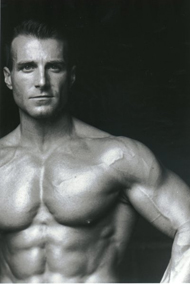 Burning Secrets of the World’s Best Bodybuilders and Fitness Models. Tom is a lifetime natural bodybuilder and fat loss expert who achieved an astonishing 3.7% body fat level without drugs or supplements. Discover how to increase your metabolism and burn stubborn body fat, find out which foods burn fat and which foods turn to fat, plus get a free fat loss report and mini course by visiting Tom’s site at: www.BurnTheFat.com!
Burning Secrets of the World’s Best Bodybuilders and Fitness Models. Tom is a lifetime natural bodybuilder and fat loss expert who achieved an astonishing 3.7% body fat level without drugs or supplements. Discover how to increase your metabolism and burn stubborn body fat, find out which foods burn fat and which foods turn to fat, plus get a free fat loss report and mini course by visiting Tom’s site at: www.BurnTheFat.com!








